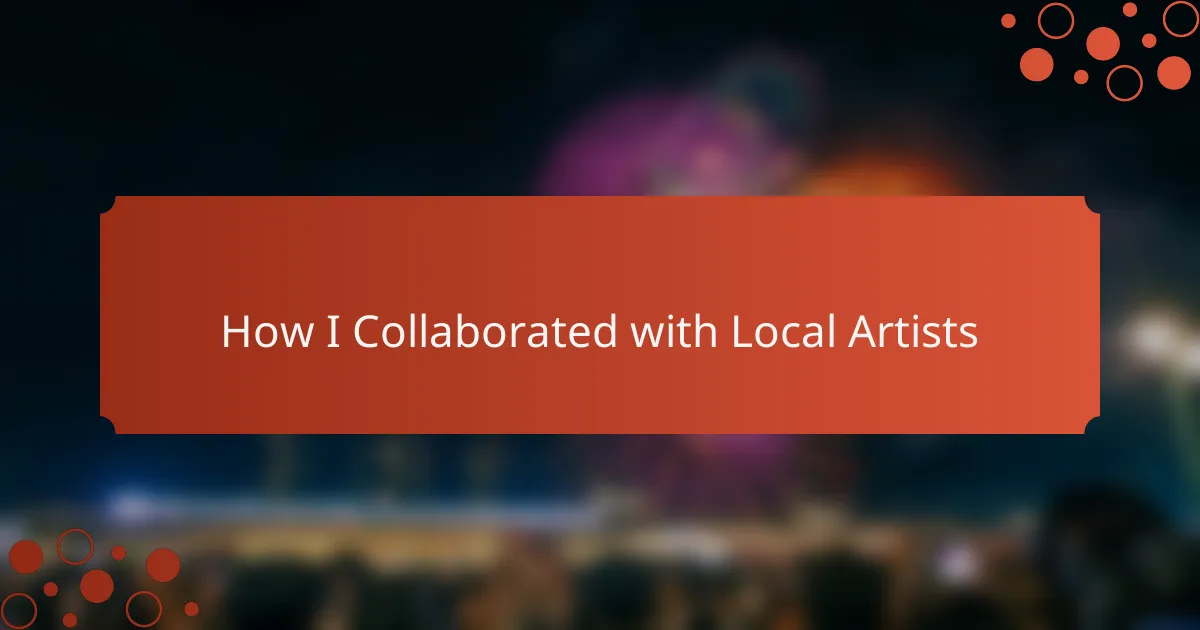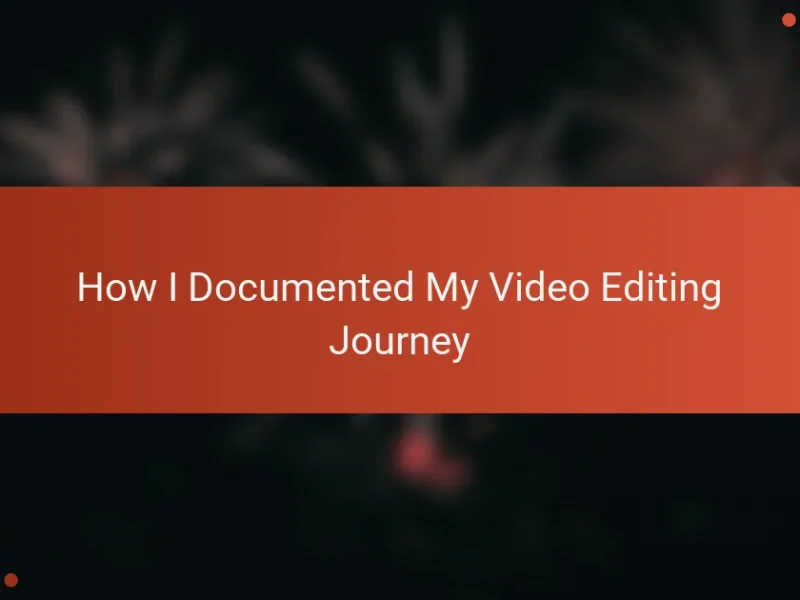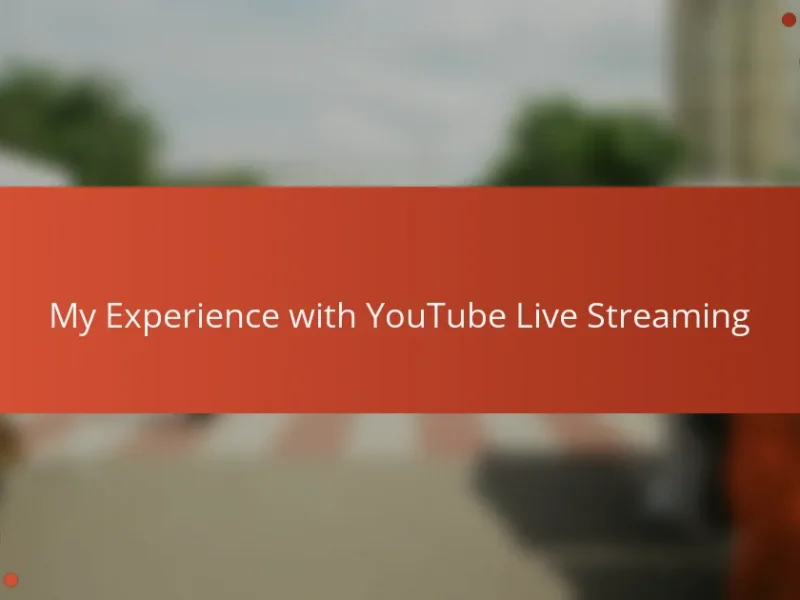Key takeaways
- Video contests foster emotional connections and community, showcasing diverse voices through creative collaboration.
- Selecting artists whose styles resonate with the project theme enhances collaboration, resulting in more impactful content.
- Clear communication and defined roles are essential for smooth workflow and maintaining creativity throughout the project.
- Showcasing collaborative content highlights individual contributions and strengthens community bonds, emphasizing the value of teamwork in creativity.
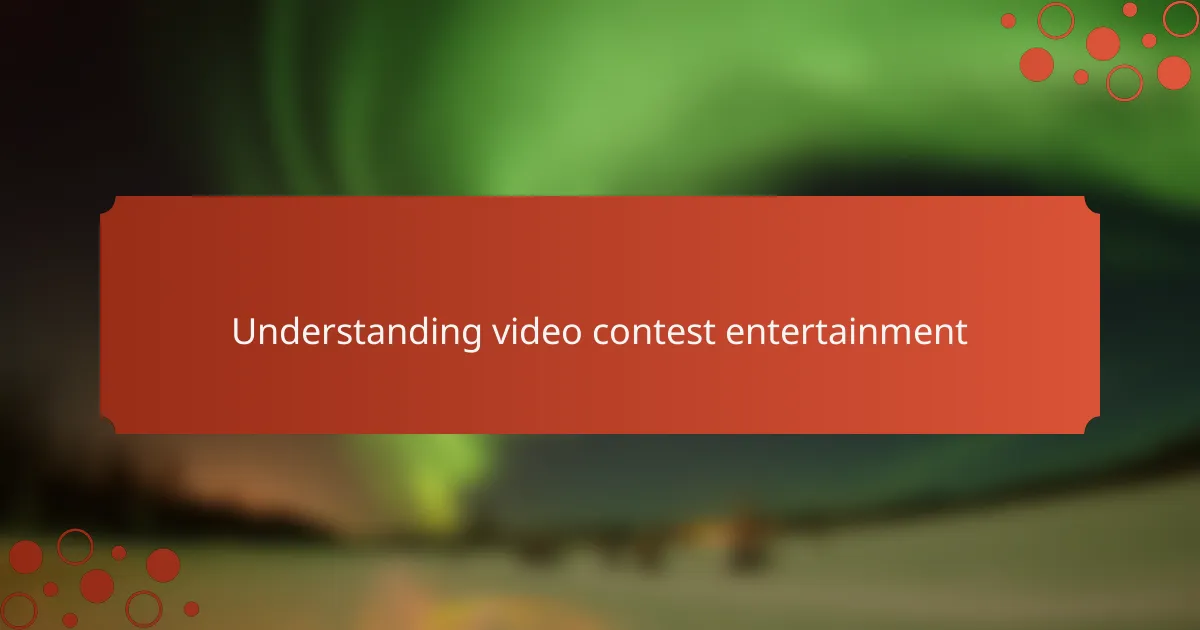
Understanding Video Contest Entertainment
Video contest entertainment blends creativity, competition, and storytelling in a way that captivates audiences instantly. From my experience, it’s fascinating how raw talent and imaginative ideas come together to create videos that are not just entertaining but also deeply personal and relatable.
Have you ever wondered what makes a video contest so engaging? For me, it’s the emotional connection—the excitement of watching diverse voices share their unique perspectives through visual art. That mix of suspense and surprise keeps me glued to the screen, eager to see what participants will come up with next.
What truly stands out about video contest entertainment is its ability to foster community and collaboration. I’ve seen how participants and viewers alike support one another, creating an atmosphere filled with encouragement and inspiration—a space where artistry and passion thrive together.
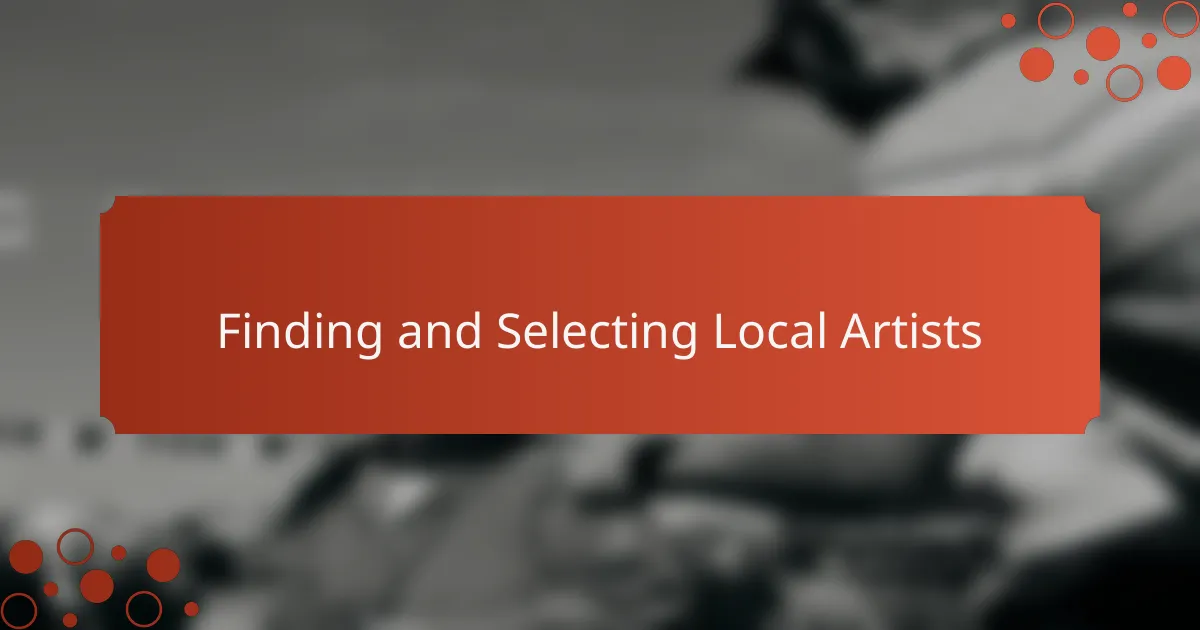
Finding and Selecting Local Artists
Finding local artists sometimes feels like a treasure hunt. I often start by exploring community events, art fairs, and even small cafes where creativity naturally spills over. Have you ever noticed how the best discoveries happen in the most unexpected places?
Selecting the right artists is equally important. I look for those whose style genuinely resonates with the video contest’s theme and energy. When I find someone whose work sparks excitement and aligns with the story I want to tell, that connection makes the collaboration feel effortless and inspiring.
I’ve also learned to trust my intuition during this process. There’s something special about spotting an artist whose passion shines through their work—it’s almost like you can feel their dedication. That emotional spark often translates into a collaboration that elevates the entire project.
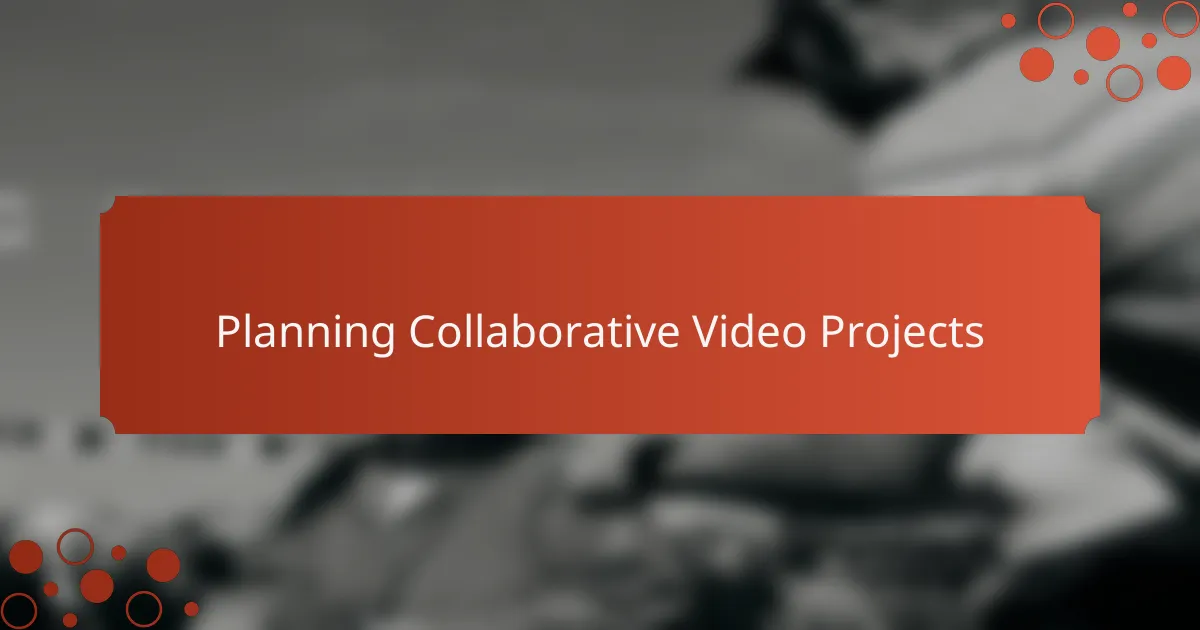
Planning Collaborative Video Projects
Planning collaborative video projects always starts with a clear vision, but I’ve found that flexibility is just as crucial. How often have you set a plan in stone only to discover that the artists’ ideas push the project into exciting new directions? Embracing that creative give-and-take makes the final product far more authentic and engaging.
One thing I emphasize during planning is defining roles early on. It might sound straightforward, but clarifying who’s responsible for what keeps the process smooth and helps avoid confusion. From my experience, when everyone knows their part—be it filming, editing, or artistic input—the collaboration flows better and feels more like a team effort than a collection of tasks.
Scheduling is another hurdle that requires careful attention. Coordinating different creative minds, each with their own rhythms and commitments, can be challenging. I often ask myself, “What’s the best way to keep momentum without overwhelming anyone?” Setting realistic timelines and frequent check-ins usually do the trick, ensuring the energy stays high and the goals stay clear.
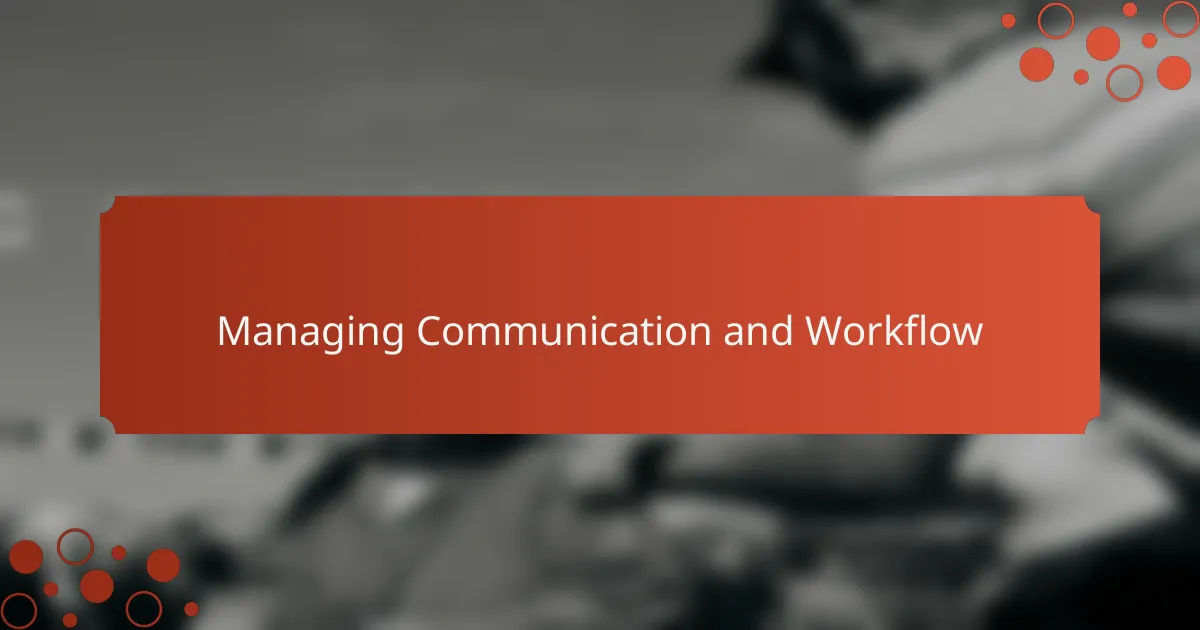
Managing Communication and Workflow
Clear communication became our backbone from day one. I remember how setting up regular check-ins, even brief ones, helped us catch misunderstandings early and keep the creative energy flowing without anyone feeling lost or overwhelmed.
Managing workflow meant balancing structure with spontaneity. Have you ever noticed how a loosely planned schedule allows for bursts of inspiration, yet still keeps everyone accountable? I found that using simple project management tools made it easier to track progress without stifling the artists’ creative freedom.
When messages flew back and forth across emails, texts, and calls, it was easy to get tangled up. So, we agreed on one main channel for updates, which surprisingly reduced confusion and built trust. It’s funny how such a small organizational choice can make collaboration feel so much smoother and more connected.
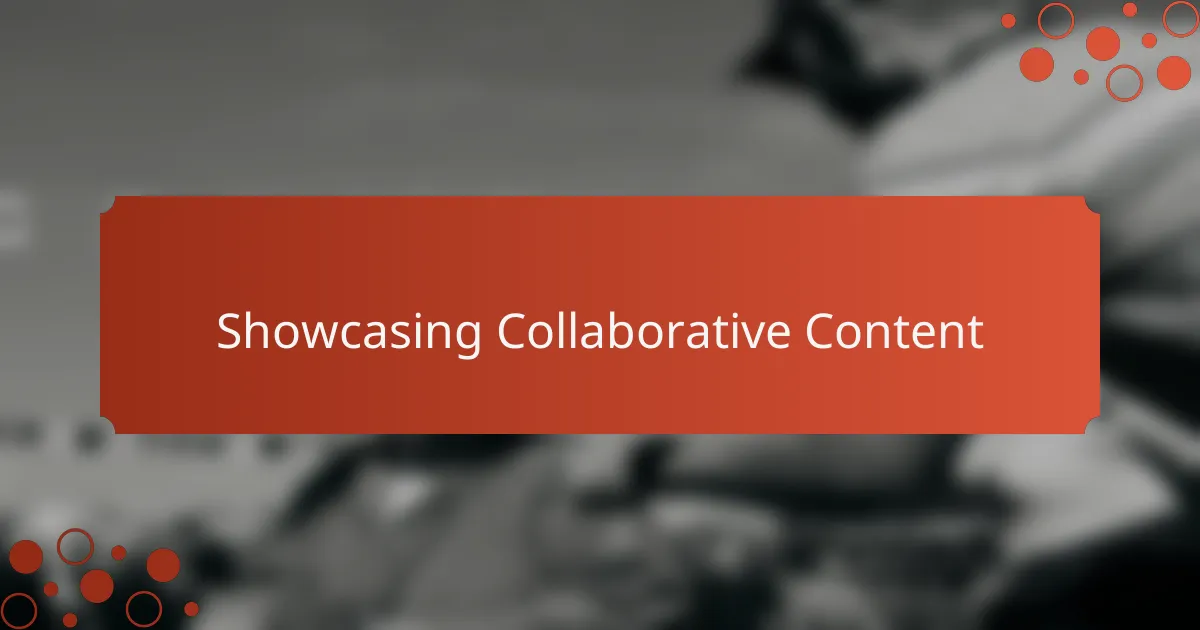
Showcasing Collaborative Content
Showcasing collaborative content is where all the magic truly comes alive. When I first shared our videos featuring local artists, I noticed how audiences smiled wider and responded more warmly, as if they could see the heart behind every frame. Have you ever realized how much more impactful a piece feels when you know it’s the product of many passionate hands and minds working together?
I like to think of showcasing as storytelling’s crescendo—it’s the moment when every creative voice blends, inviting viewers in to experience something unique and alive. From my experience, highlighting each artist’s contribution, whether through behind-the-scenes clips or artist spotlights, adds layers of depth that keep people engaged beyond just the final video.
What excites me about this stage is watching the community respond and relate. When I see comments celebrating the artists and the collaborative spirit, it reminds me why sharing these projects matters so much. It’s not just about the content itself, but about building connections that inspire both creators and audiences alike.
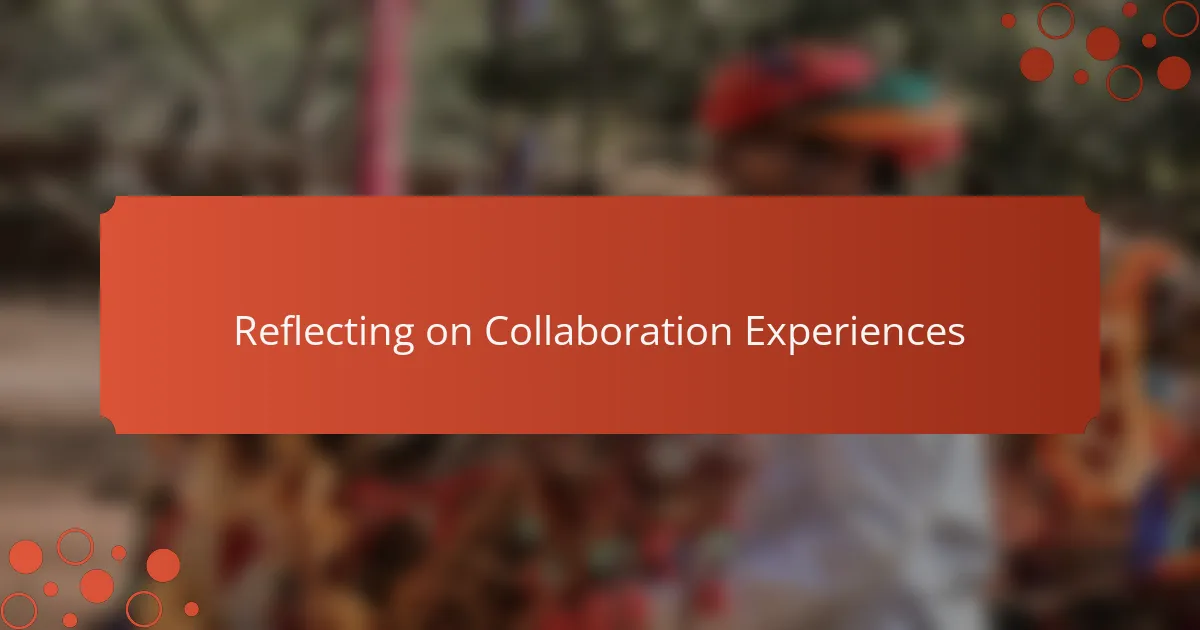
Reflecting on Collaboration Experiences
Looking back on my collaboration experiences, I realize how much they taught me about the power of trust and openness. Have you ever felt that moment when you step back and see how individual contributions unexpectedly elevate the entire project? Those moments remind me why collaboration isn’t just about combining talents—it’s about creating something none of us could have done alone.
Sometimes, reflecting means acknowledging the challenges too. Communication hiccups or differing creative visions surfaced, but each snag became a lesson in patience and adaptability. I recall a time when a misunderstanding nearly derailed our timeline, yet working through it strengthened our team’s bond in ways I hadn’t anticipated.
What truly sticks with me is the joy of shared celebration. When the final video premiered, seeing local artists light up with pride felt like the real reward. It made me wonder—how often do we pause to appreciate not just the outcome, but the people and stories woven into the creative journey?
